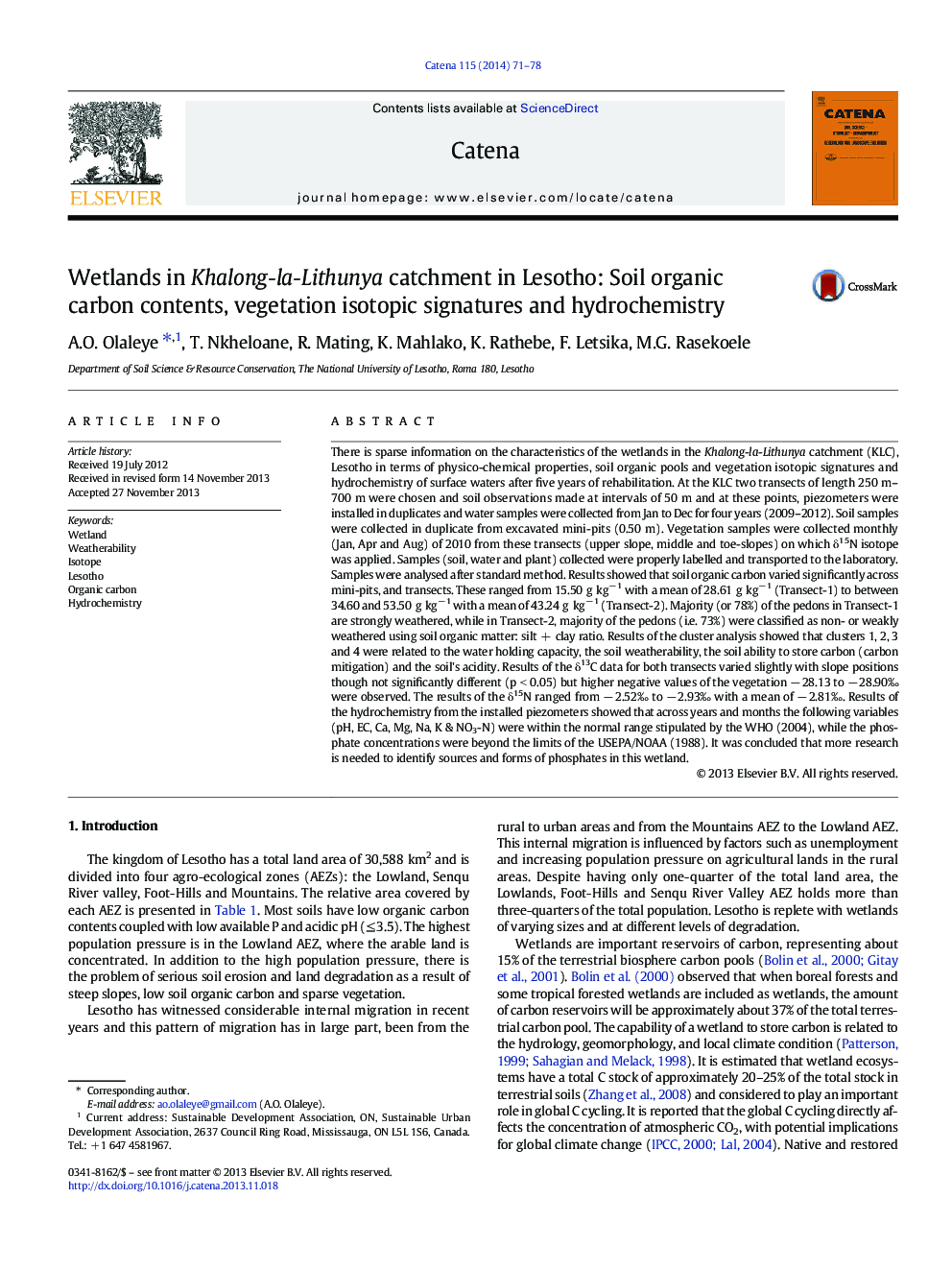| کد مقاله | کد نشریه | سال انتشار | مقاله انگلیسی | نسخه تمام متن |
|---|---|---|---|---|
| 6408097 | 1629237 | 2014 | 8 صفحه PDF | دانلود رایگان |
- No data on organic carbon, isotopic N and hydrochemistry of wetlands in Lesotho
- Results showed that organic carbon ranged from > 81.50 ± 8.5 to > 32.8 ± 2.2 g kgâ 1.
- Isotopic δ15N ranged from â 2.52â° to â 2.93â° with a mean of â 2.81â°.
- Higher water soluble phosphates were observed across years in ground water.
- Even after five years of restoration, wetland has not fully recovered.
There is sparse information on the characteristics of the wetlands in the Khalong-la-Lithunya catchment (KLC), Lesotho in terms of physico-chemical properties, soil organic pools and vegetation isotopic signatures and hydrochemistry of surface waters after five years of rehabilitation. At the KLC two transects of length 250 m-700 m were chosen and soil observations made at intervals of 50 m and at these points, piezometers were installed in duplicates and water samples were collected from Jan to Dec for four years (2009-2012). Soil samples were collected in duplicate from excavated mini-pits (0.50 m). Vegetation samples were collected monthly (Jan, Apr and Aug) of 2010 from these transects (upper slope, middle and toe-slopes) on which δ15N isotope was applied. Samples (soil, water and plant) collected were properly labelled and transported to the laboratory. Samples were analysed after standard method. Results showed that soil organic carbon varied significantly across mini-pits, and transects. These ranged from 15.50 g kgâ 1 with a mean of 28.61 g kgâ 1 (Transect-1) to between 34.60 and 53.50 g kgâ 1 with a mean of 43.24 g kgâ 1 (Transect-2). Majority (or 78%) of the pedons in Transect-1 are strongly weathered, while in Transect-2, majority of the pedons (i.e. 73%) were classified as non- or weakly weathered using soil organic matter: silt + clay ratio. Results of the cluster analysis showed that clusters 1, 2, 3 and 4 were related to the water holding capacity, the soil weatherability, the soil ability to store carbon (carbon mitigation) and the soil's acidity. Results of the δ13C data for both transects varied slightly with slope positions though not significantly different (p < 0.05) but higher negative values of the vegetation â 28.13 to â 28.90â° were observed. The results of the δ15N ranged from â 2.52â° to â 2.93â° with a mean of â 2.81â°. Results of the hydrochemistry from the installed piezometers showed that across years and months the following variables (pH, EC, Ca, Mg, Na, K & NO3-N) were within the normal range stipulated by the WHO (2004), while the phosphate concentrations were beyond the limits of the USEPA/NOAA (1988). It was concluded that more research is needed to identify sources and forms of phosphates in this wetland.
Journal: CATENA - Volume 115, April 2014, Pages 71-78
